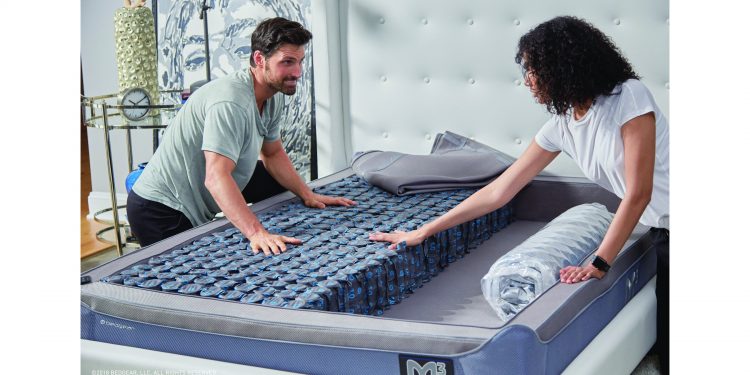By Ersin Demir
Sleep Specialist / Trainer / Sleep Products Researcher
Sleep is not just a state of physical resting, but it is essentially a mental purification, a rebirth. The vast majority of chronic illnesses trap us because we do not get enough sleep or delay our sleep time. Sleeping in a bed that suits our morphology, anthropometric data and, of course, personal preferences, is a must for sleep that is so vital. Let’s try to explain how we can have such a bed.
Preparation phase
First of all, we must know ourselves well in order to find best-suiting brand to us among dozens of brands and hundreds of models. We should analyze our personal preferences, habits, sleep problems and medical problems, if any, and obtain general material information before visiting a sales point, if possible. Before leaving the house, it will help us prepare a few difficult questions. Consultants of companies that do their job seriously are relatively knowledgeable about product contents, but it would not be right to expect the same quality presentation at every point of sale. The answers to the right questions can give us a clue as to whether we are in the right place.
Store experience
Let me state the last saying first: Don’t make the buying decision without trying a mattress! Our different body shapes, different ways of sleeping and personal preferences set us apart. For this reason, it is extremely important to try the bed by lying down on it. The most important thing to be aware of when we lie down is to make sure that our spine maintains its neutral position. Disruption of the natural structure of the spinal discs will cause the discs to not be cast in cement correctly, and the ligaments and tissues to stretch, and will cause morning pain first and then chronic musculoskeletal problems. If we are not out shopping alone, we should ask those next to us to control our spine plane, and if we are alone, we should get help from the consultant. If our spinal axis is not straight, it should move to a different bed; On a straight axis, we should stay in this position for at least 15 minutes and try to feel the counter pressure of the mattress on our body. The fact that our body weight is not distributed homogeneously will cause discomfort especially at higher points such as shoulders and hips. This situation, which increases the pressure on our blood vessels, will limit the circulation and cause us to move in the other direction in a short time. By determining the difference between the time when we lie down and the time we need to move and divide it by the total sleep time, we can roughly calculate how many times we will move during the night. This calculation will lead us to estimate the relative number of sleep interruptions. Let’s try to explain this with an example.
Let’s assume that our night sleep is 8 hours, or 480 minutes; Let’s think that the pressure produced by our mattress causes us to move every 5 minutes. When we divide our total sleep time of 480 minutes by 5 minutes, which is the movement time, we get the number 96, which is a terrible number for our sleep hygiene. The result would cause an estimated 1/3 micro sleep interruption. Researches show that more than 8 sleep interruptions a night have devastating effects on our memory and learning skills.
It does not seem possible for us to test this period directly in the store; But 15 minutes of experience will be a reference when choosing the mattress that best suits us or when comparing with other brands, as it will allow us to perceive the pressure difference between two different mattresses. Our perceptions must be open, we must trust our feelings.
Movement should be small but easy
We know that abnormal activity during sleep disrupts the deep sleep process. The less we move, the more efficient sleep we will get. One of the important mistakes at this point would be to think that we should not act at all, based on the argument that there is little movement. It also contains natural activity in a homogeneous sleep process. After the titles we have mentioned before such as the straightness of the spine axis and the importance of pressure, another important topic is ease of movement. The natural mobility we will experience throughout the night helps balance dermal pressure. However, the relaxed muscles cannot fully perform their duty under the load caused by movement. Therefore, the mattress should support natural mobility. So how do we know if the mattress supports movement?
Let’s try to turn in the opposite direction, to our left, while we are in a lateral position to our right; we will probably experience some tension / pulling sensation (unless there is a chronic spine problem). I guess it would not be absurd to say that the feeling we experience after this movement we do with our daytime energy and muscle density will increase during night sleep. Every movement we make while we are asleep exposes our spine to several times the additional load. We should know that it is possible to estimate the effects during sleep by scoring the intensity of the tension and withdrawal sensations we experienced during the trial. If the bed we are trying is too hard, it is possible for us to move more easily. In this case, however, movement will be easy, but the pressure will increase. Trying to move in beds that take in the body protrusion more than necessary is a task that requires effort. Even if the number of moves decreases, the difficulty in movement will increase. It is therefore very important to find the ideal hardness balance. The declaration should not be adhered to as the mattress companies determine their hardness ratings based on the form of another mattress, not according to certain scales. A medium hard mattress that is not too hard and not too soft will be the right choice. The definition medium hard is not independent of our physiological characteristics. Our body weight and weight distribution are the most important determinants. A mattress should be soft enough to fill body cavities and hard enough to support our spine.

To avoid sweating while sleeping
Even if we sweat certain amounts during the day, we are not as disturbed as we sweat at night. Studies show that sweating during sleep increases the stress hormone. The stress hormone cortisol is also our biological alarm clock. It prepares us for a new day by being released close to waking up. However, it is not a condition we want to be secreted during sleep. Increasing body temperature causes cortisol secretion and cortisol suppresses adenosine that prepares us for sleep, interrupting the deep sleep process. Sweating is also a phenomenon that causes micro sleep interruptions, just like excessive sleep activity. Let us briefly examine what kind of a bed we should have in order to form the ideal microclimate.
Let’s focus first on the cotton ratio in the fabric, then on the properties of the fiber that is quilted on the surface. Cotton, Viscose and Bamboo are good moisture absorbers; Kapok fiber and some special perforated fibers that I will not mention the brand name are moisture repellent. Both types will help reduce sweating.
Latex foams and infusion foams will also reduce moisture buildup. Although the heat retention property of the viscoelastic foam made it unsuccessful in this regard, several versions with unconventional open cells have been successful. On the other hand, there are also fibers with proven effects, which are generally used in natural coded beds of boutique brands. Silk, linen, camel hair and horsehair are just a few of these examples.
Wishing you a new year that you will make the right choices …
Healthy sleep.





